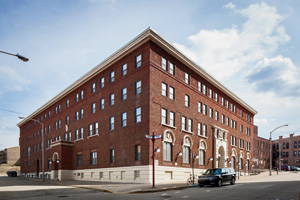Adapting to New Environs
As Passive House certification gains ground in the United States, the standards are modified for North America's diverse climate conditions.
By Architectural Record
Learning Objectives:
- Describe the goals of the Passive House certification system.
- Outline the arguments for adapting the certification system for North America.
- Outline the original certification criteria and explain how the new criteria are different.
- Discuss the challenges faced by several design teams using the original Passive House system in extreme climates and explain how these challenges were overcome.
Credits:
This test is no longer available for credit
The Passive House concept for ultra-low-energy buildings first developed in the United States during the 1970s energy crisis, only to be adopted and refined into a codified certification system in Germany, after funding in this country dried up. But, like a prodigal son, Passive House has reemerged in the U.S., with use of the certification system steadily gaining ground over the last decade. Currently, there are more than 140 U.S. projects that have met the rigorous German-born standards. Satisfying the stringent criteria requires airtight, super-insulated envelopes that are shaped by ambitious performance goals. Click here to read about it »

Photo © Jeremy Bittermann
Originally published in Architectural Record.
Originally published in April 2015






